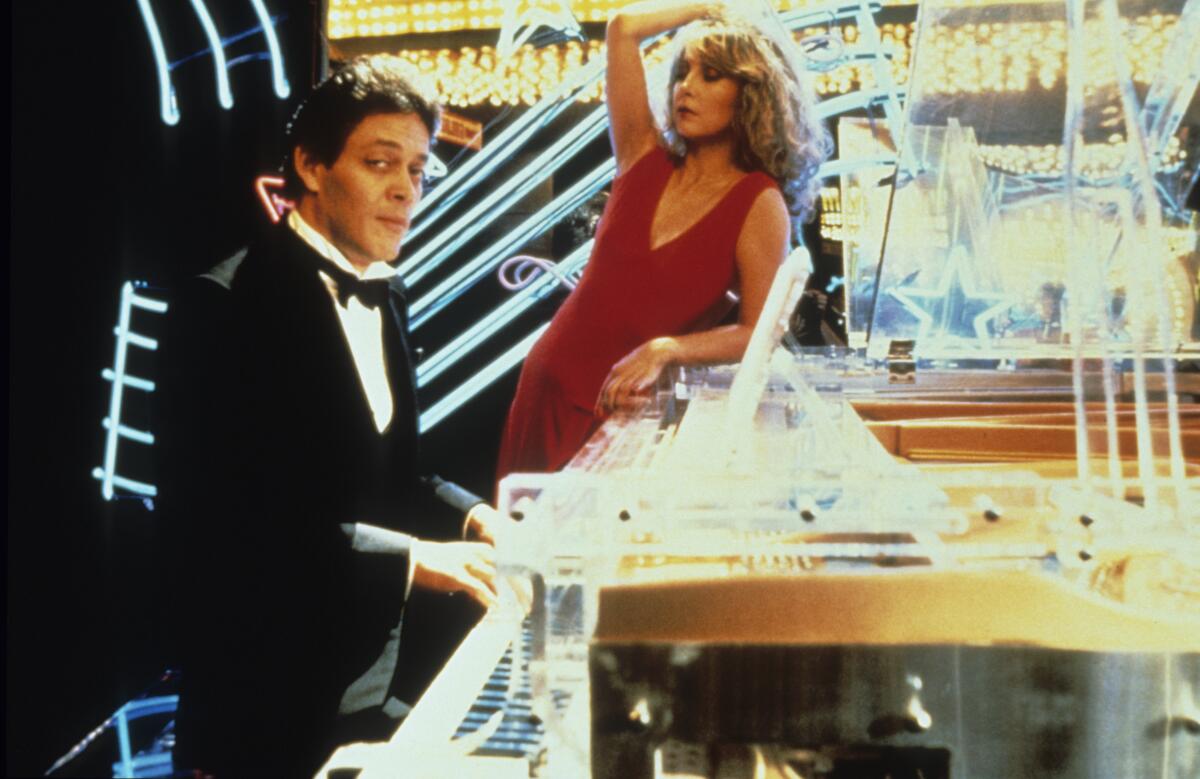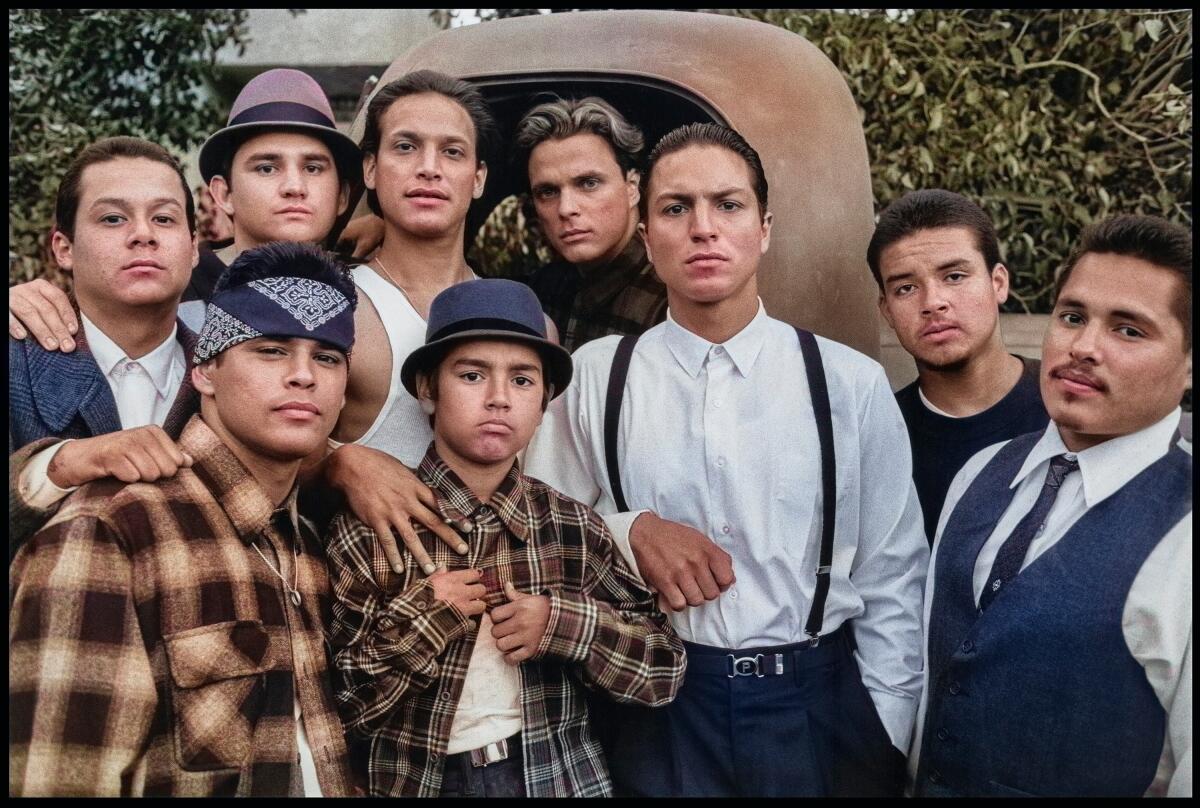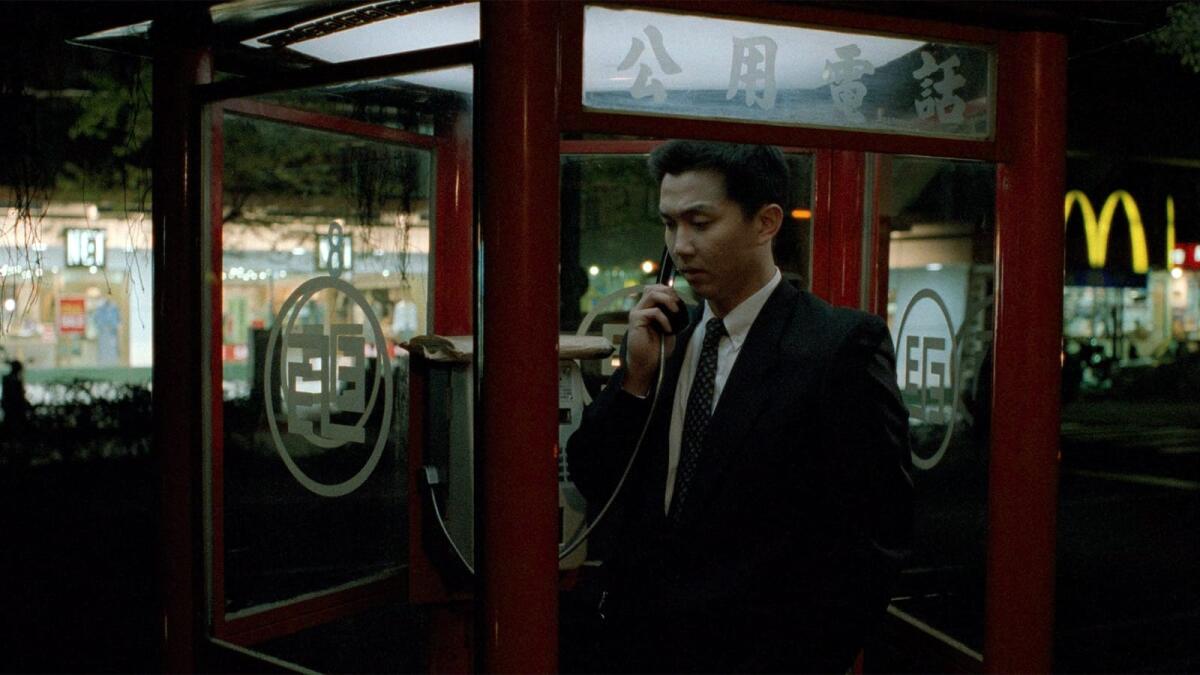Francis Ford Coppola revisits ‘One From the Heart: Reprise’ plus the best movies in L.A.

- Share via
Hello! I’m Mark Olsen. Welcome to another edition of your regular field guide to a world of Only Good Movies.
This week, Team LAT will be heading to Park City, Utah, where I will be covering the Sundance Film Festival along with my colleagues, Matt Brennan, Justin Chang, Joshua Rothkopf and Jen Yamato. We all selected a couple of titles we are looking forward to, including David and Nathan Zellner’s “Sasquatch Sunset,” Yance Ford’s “Power,” Nora Fingscheidt’s “The Outrun,” Josh Margolin’s “Thelma” and Steven Soderbergh’s “Presence.”
I spoke to Brian Eno about Gary Huswit’s “Eno,” the first documentary on the famed musician and producer premiering at Sundance. The film was created with a custom-built generative AI engine, resulting in a watch that’s different every time it is shown. Eno has used generative AI technology in his own work, and had quite a bit to say on the subject, including, “The only thing that really worries me about AI is who owns it. And if it’s in the hand of Silicon Valley frat boys, I’m seriously troubled. If it’s in the hands of people like [Mark] Zuckerberg and [Elon] Musk and all that other group of people, then I think we’re in trouble because I don’t trust them to make the momentous decisions that they’re being called upon to make.”
This week we are also launching an ongoing project looking at the films of 1999. As the introduction states, “Across film, TV, music, comedy, books, video games and more, we argue, 1999 produced a dizzying variety of essential pop culture artifacts, milestones and turning points, not only remaking the culture as we knew it then, but creating the culture we live in now.”
As luck would have it, the first film in the series premiered at Sundance, “American Movie,” directed by Chris Smith. The documentary covers an aspiring filmmaker in Wisconsin named Mark Borchardt and his hapless attempts to make a horror film called “Coven.”
As Joshua Rothkopf writes, “There is a dream and a nightmare both in ‘American Movie’ — what has making ‘Coven’ ultimately cost Mark? — and that’s one of the reasons why it still feels significant. … Both ‘Coven,’ a disaster, and ‘The Blair Witch Project,’ a blockbuster, expressed the same yearning for authenticity that has driven — plagued? — the industry ever since. And success, whatever that would come to mean in the new millennium, was a shifting metric.”
Francis Ford Coppola’s ‘One From the Heart: Reprise’

Francis Ford Coppola has made a habit of tinkering with his older films and has now turned his attention (not for the first time) to 1982’s “One From the Heart.” The film was widely panned on its release and was a box-office failure, yet it must occupy a place in any telling of Coppola’s story. He financed the film himself, hoping it would enable him to launch his own studio, but when the film failed, it wiped him out.
The movie is a romantic musical, not entirely unlike Martin Scorsese’s similarly doomed 1977 “New York, New York” in the way it fuses deep dramatic emotions with a musical’s sense of whimsy and irrationality. (That “One From the Heart” is set in a backlot re-creation of Las Vegas only adds to its disorienting strangeness.)
Hank and Frannie (Frederic Forrest and Teri Garr) break up on their fifth anniversary. Frannie goes off with the suave Ray (Raul Julia), while Hank finds himself with the mysterious Leila (Nastassja Kinski). But they realize what they really still want is each other. The film’s score, with songs by Tom Waits sung by Waits and Crystal Gayle, was nominated for an Oscar.
The 4K restoration and fresh re-edit of “One From the Heart: Reprise” is playing at the Alamo Drafthouse DTLA. It will also screen at the Egyptian Theatre on Jan. 26, with a Q&A with Sam Wasson, author of the new book “The Path to Paradise: A Francis Ford Coppola Story,” moderated by Larry Karaszewski.

In a 1996 profile of Coppola by Patrick Goldstein, the filmmaker’s old friend and collaborator George Lucas said, “Francis had no concept of failure whatsoever — he was convinced we were going to take over the world. Francis isn’t just a filmmaker. He’s an Italian opera. He’s the kind of person who would’ve built the Vatican or, before that, the pyramids. He thrives on chaos and tumult. He was constantly jumping off cliffs, and I was the guy who kept running after him, saying, ‘You can’t do that!’ ”
In a 2012 conversation with Susan King, Coppola himself said of the film, “You have to put it in context. I had made my ‘Godfather’ films, ‘The Conversation’ and then ‘Apocalypse Now’ and then ‘One From the Heart.’ They were all done one after another and they were totally in a different style. So people who were used to ‘The Godfather,’ which was a very classical style, suddenly they got hit with ‘Apocalypse Now,’ which was sort of a different type of film, and then to go with what seemed at the time a totally innocuous love story shot in a world of artifice.... It was very difficult for people to have a logical judgment. Having made what were essentially four successful films in a row, ‘One From the Heart’ was an easy shot to say, “This is terrible,” and that is what happened.”
Coppola added, “It sank our fledging studio. We had the dream of having a whole new Hollywood studio. It was a fun period, but, unfortunately, a lot of those dreams don’t happen. It didn’t work and then it took me 10 years to pay off the debt.”
‘Blood In Blood Out’ returns to East L.A.

In celebration of a new book on its production, the movie “Blood In Blood Out” will have a rare theatrical screening on Saturday at Cal State L.A. with director Taylor Hackford, screenwriter-poet Jimmy Santiago Baca and members of the cast and crew in attendance.
As Fidel Martinez recently wrote, “The epic crime drama about a trio of Mexican American cousins from East Los Angeles has earned a rabid cult following among Latino audiences since its 1993 release. The film initially bombed at the box office — Disney, which financed it through its now defunct Hollywood Pictures label, buried the movie because of its depictions of gang violence. Despite its short-lived theatrical run, ‘Blood In Blood Out’ found a second life thanks to home video distribution and word of mouth.”
“This film has a magic life,” Hackford said. “It’s very wonderful to have that kind of passion in the community.”
Last year Carlos Aguilar wrote a definitive piece on the film, speaking to Hackford as well as actor Benjamin Bratt, noted fan and journalist Shea Serrano and others. Carlos De Loera also created a guide to the East L.A. locations in the film, including the giant bunya pine tree that became known as El Pino.
Other points of interest
Edward Yang retrospective

Taiwanese filmmaker Edward Yang, who died in 2007 at age 59, is getting a retrospective from the American Cinematheque, with screenings at the Egyptian, Aero and Los Feliz 3. Yang’s final film, 2000’s “Yi Yi,” is his best known and most widely available film, so the chance to see his other work on the big screen makes this one of the most essential series of the year so far. Yang’s films are snapshots of a world in transition, as modernity collides with tradition.
Born in Shanghai and raised in Taipei, Yang studied film at USC but was working as a computer engineer in Seattle when he saw Werner Herzog’s “Aguirre, the Wrath of God” and his desire to make films was rekindled. He would become a key figure in Taiwan’s New Wave along with Hou Hsiao-hsien.
Along with “Yi Yi,” also screening in the Cinematheque’s series is 1982’s “In Our Time,” 1983’s “That Day, On the Beach,” 1985’s “Taipei Story,” 1986’s “The Terrorizers,” 1991’s “A Brighter Summer Day,” 1994’s “A Confucian Confusion” and 1996’s “Mahjong.” Both “A Confucian Confusion” and “Mahjong” are the West Coast premieres of new 4K restorations.
“Yi Yi” won Yang the best director prize at the 2000 Cannes Film Festival, as well as prizes from the New York Film Critics Circle and the Los Angeles Film Critics Assn. The National Society of Film Critics named it the best picture of the year.
Writing about “Yi Yi” in 2011, Dennis Lim said, “A work of remarkable delicacy and assurance, so detailed and fully inhabited that it seems to renew itself and its connection to the viewer with each encounter, it stands today as a reminder not only of Yang’s mastery but also of just how few filmmakers possess the wisdom and generosity that humanist cinema of this sort truly requires. … The rare film that can truly be called universal, ‘Yi Yi’ ponders questions that pertain to us all: How did we end up with the lives we have, and how do we accept them, if we choose to do so? More than a movie that stays with you, it’s one to live with.”
Greta Garbo tribute
The UCLA Film and Television Archive is launching a series dedicated to star Greta Garbo, who helped transform screen acting. As the program notes state, “Garbo biographer John Bainbridge described the difference as the abandonment of an inviting style of beauty in favor of more ‘languorous and instructable’ expressions, ‘as if they were brooding over some abiding sorrow.’ Garbo, in other words, forced a shift from an outward directed look to one that suggested a complex but ultimately unknowable inner life. The most modern of mediums, in short, didn’t become modern until she arrived.”
The series launches with Rouben Mamoulian’s 1933 “Queen Christina” and George Fitzmaurice’s 1931 “Mata Hari.” Other films in the series, which runs through March, include Ernst Lubitsch’s 1939 “Ninotchka,” Clarence Brown’s 1926 “Flesh and the Devil,” Edmund Goulding’s 1932 “Grand Hotel” and G.W. Pabst’s “Joyless Street.” Many of the films will be presented in 35mm prints from the collection of the George Eastman Museum.
Only good movies
Get the Indie Focus newsletter, Mark Olsen's weekly guide to the world of cinema.
You may occasionally receive promotional content from the Los Angeles Times.




